Kingdom Animalia Order Lepidoptera Genus Heliconius Higher classification Heliconius | Phylum Arthropoda Family Nymphalidae Scientific name Heliconius melpomene Rank Species | |
Similar Heliconius, Butterfly, Heliconius erato, Butterflies and moths, Insect | ||
Heliconius melpomene, the postman butterfly, common postman or simply postman, is one of the heliconiine butterflies found from Mexico to northern South America. Several species in the genus have very similar markings and are difficult to distinguish. This is an example of mimicry.
Contents
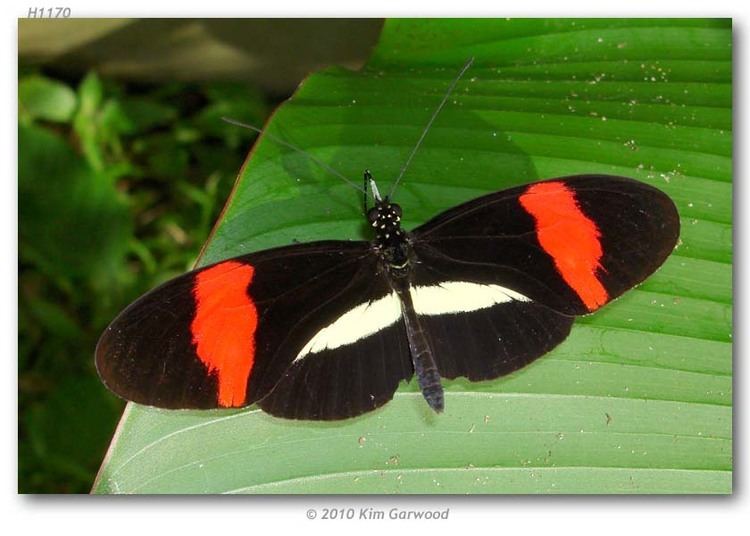
Heliconius melpomene transformation
Description
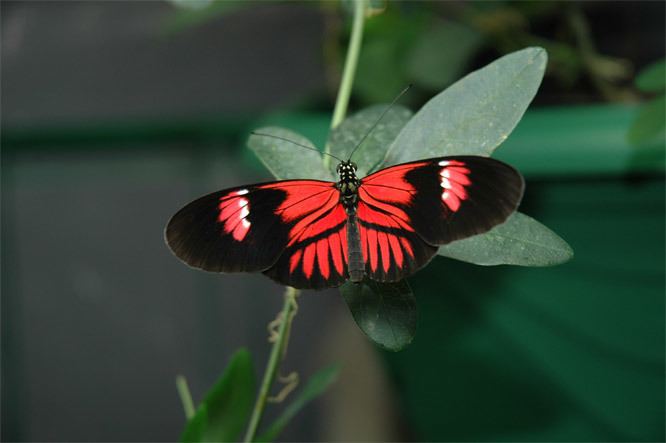
The postman butterfly has large long wings with an orange stripe down each forewing. It is poisonous and has red patterns on its wings. They tend to look similar to the species Heliconius erato. Two features found on the underside help to distinguish H. erato from H. melpomene—H. erato has four red dots where the wing attaches to the thorax while H. melpomene has three and the yellowish white stripe on the underside reaches the margin of the hindwing in H. erato but ends before reaching the margin in H. melpomene.
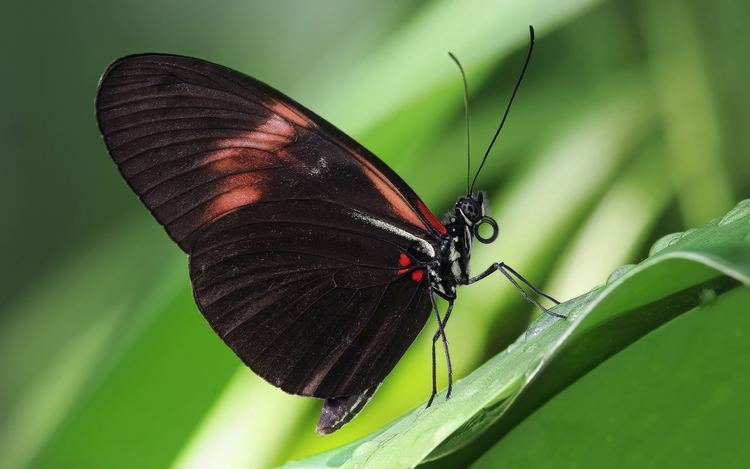
There are many morphs of this butterfly throughout Central and South America. The geographical variation in patterns has been studied using linkage mapping and it has been found that the patterns are associated with a small number of genetic loci called genomic "hotspots". Hotspot loci for color patterning have been found homologous between co-mimics H. erato and H. melpomene, strengthening evidence for the parallel evolution between the two species, across morph patterns.
Origins
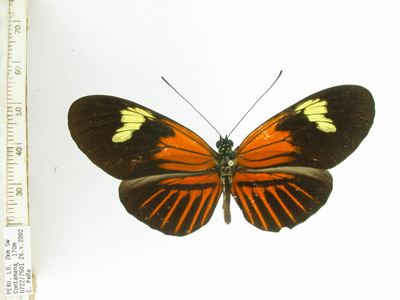
A recent study, using amplified fragment length polymorphism (AFLP) and mitochondrial DNA (mtDNA) datasets, places the origins of H. melpomene at 2.1 Mya. H. melpomene shows clustering of AFLPs by geography suggesting that the species originated in eastern South America.
Distribution
The distribution of this butterfly is from Central America to Southern Brazil.
Larva
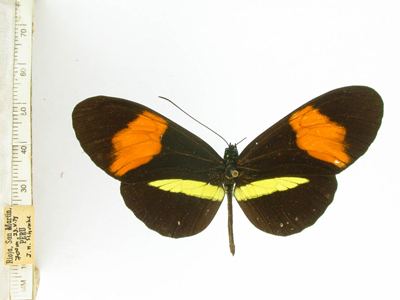
The caterpillar feeds on passion flower species. In Central America, the host plants are Passiflora oerstedii and Passiflora menispermifolia. In other places they breed on several other Passiflora species. Larvae of Heliconius charithonia also eat Passiflora, in order to indirectly attract males to females via the chemical signals emitted upon feeding.
Subspecies
Subspecies of Heliconius melpomene include:
